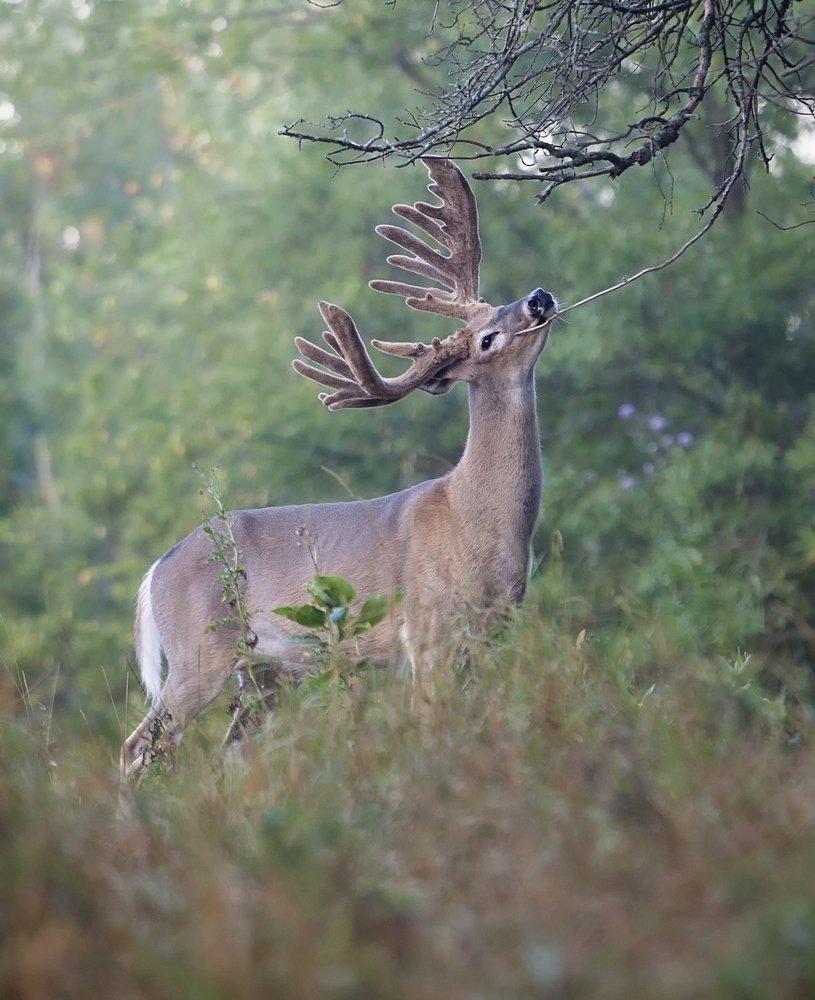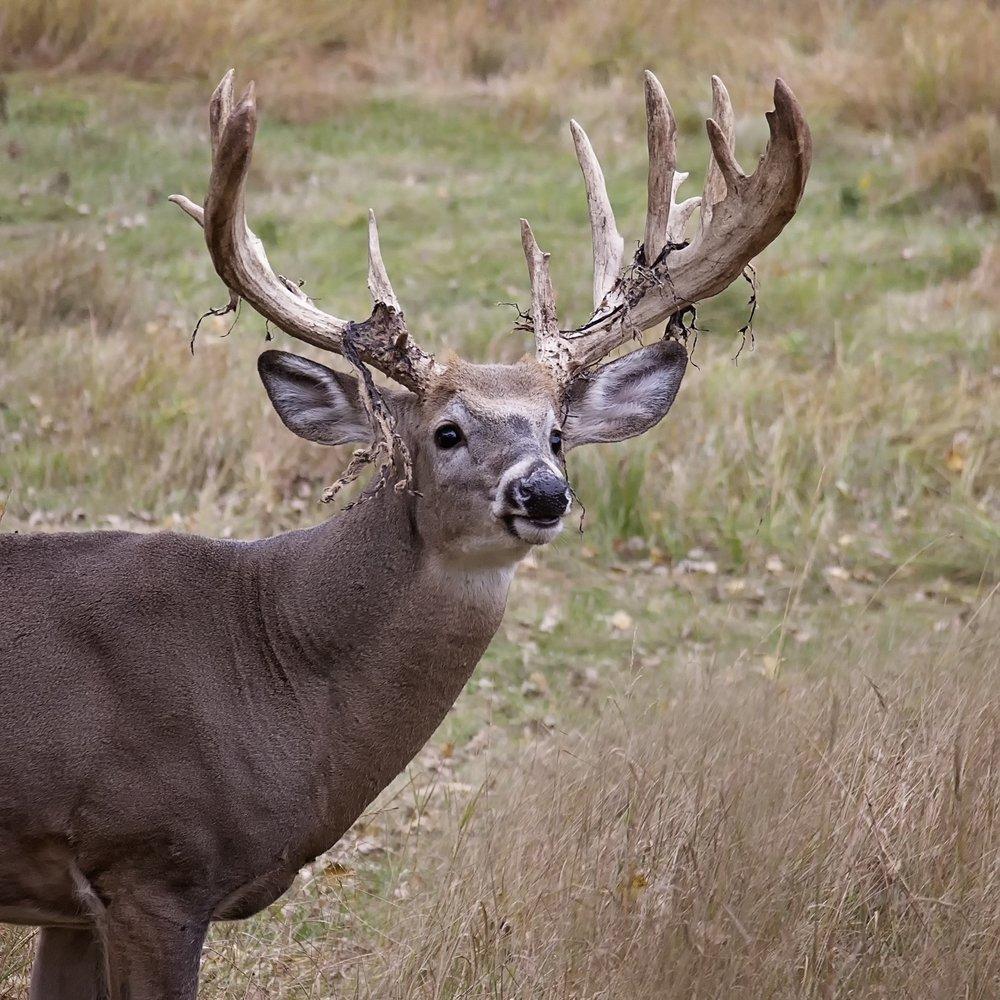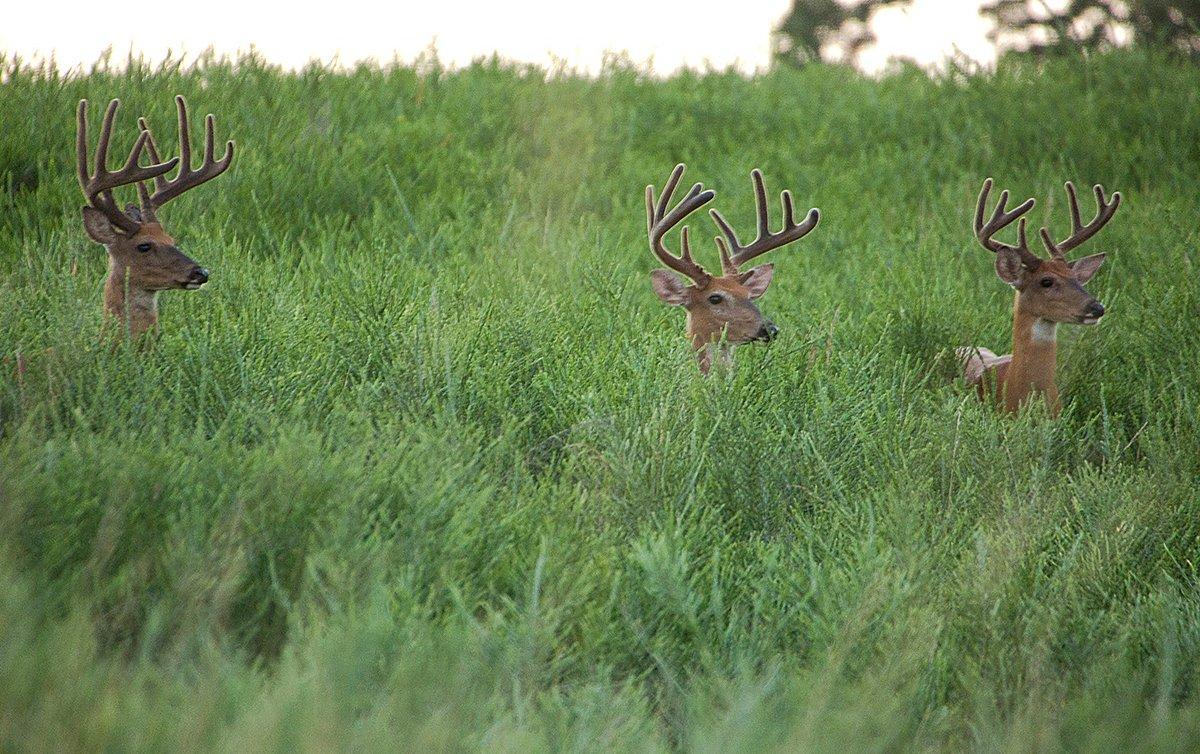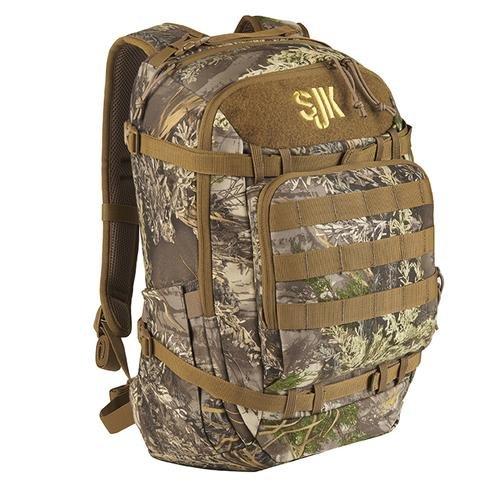Velvet Bucks Offer a Very Brief Window
Few states offer a legitimate chance at killing a velvet buck. That's why states such as Montana, South Carolina and Kentucky receive such a high mark from deer hunters. They open before most other states. If you plant to hunt in one of the states that offers such an opportunity, and your dream is to kill a velvet buck, we've got the game plan for you.
The Science Behind the Fuzz
Velvet is a very intriguing conversation piece for hunters. The growing process peaks the interest of many. The timeline begins shortly after the previous year's set of antlers are cast. Once this takes place, the bloody spot that remains slowly scabs.
After this takes place, a thin layer of skin covers the pedicle (tissue covering the antler base) and a small discolored dot forms at the center. As spring and summer approach, the days get longer. This triggers a chemical reaction within the whitetail that jumpstarts the birth of the new crown.
Blood flow increases to the pedicle and the thin layer of skin protrudes upward through several shallow arteries. Minerals encourage the antlers to increase in magnitude as nutrients are deposited on protein bases established by blood streams. Growth continues in this fashion over the next five months.
The growing process generally completes its cycle around the first couple weeks of August. Tiny fibers on the velvet will be noticed throughout the growing process, but are extremely visible once antlers mature. These act as sensory receptacles for the whitetail. Anytime the antlers touch something, the buck senses it. This does two things for a whitetail buck. First, it gives the sense of touch so that damage may be prevented during the growing phases. Secondly, it allows the buck to memorize where his head gear sits once the velvet peels off. He loses his sense of touch once this happens. A typical deer will generally shed his velvet around the second week of September.
Predictability Prevails with Early Season Bucks
I often hear people talk about the rut being the best time to hunt mature whitetails. I am not among this crowd. I am in complete agreement that the rut provides great opportunities to put big deer on the ground. However, early season bowhunting for velvet bucks gives a hunter something the rut lacks — predictability.

Don't Miss: 7 Things to Know About Bachelor Groups
While in bachelor groups, bucks are very predictable. Most days, the same consistent pattern is repeated. Bedding, feeding, and travel route patterns likely will not change unless human or environmental factors cause such. These patterns will last until shortly after the velvet strips off. Once the velvet disappears, bucks usually break apart from their summertime lifestyles and fade into the shadows. The idea is to put the nail in the coffin before this takes place.
Use Efficient Scouting Methods
Scouting is crucial when patterning summer bachelor groups. I did mention that early season can be an optimum time. I also said bucks seemingly repeat the same schedules each day. This being so, it will likely be boring afternoons in the stand if you do not do your homework. The objective is to scout effectively enough to decipher the patterns of the bucks you are after, and plan the hunt accordingly.
My most preferred method of scouting is from afar; provided that I have a good set of optics. Watching preferred food sources during the afternoon hours will likely give a hunter a good idea of what is living there. Scouting from afar has two advantages. The first is that scent no longer becomes a problem as long as you are scouting from downwind. The second is that bucks can be viewed live in real time. What time, where they enter the field and how they use the terrain can also be viewed during scouting trips.
Don't Miss: Summer Scouting for Deer
Trail Cameras are hands down one of the best scouting tools on the market. Trail cameras are much more useful to pattern early season bucks than any other time of the year. I have found the most success setting up cameras over trails leading to and from bedding areas to food sources.
At first, the best method is to set them up closer to the food source than bedding area. This will provide less chance of pressuring deer. If photos show that potential targets are not reaching the food source during shooting hours; withdraw from the food with the cameras and repost them closer to bedding areas to intercept them quicker. However, extreme caution must be taken as to not pressure deer. One mistake and the early season opportunity could turn from full proof to no chance at all.
Gunflint Realtree MAX-1 Day Pack by Slumberjack
Establishing camera sites near water sources during times of drought are also recommended. If the water recedes, deer will recede with it. If there is a secluded pond or stream in a stand of timber, this could be the key to unlocking an early season bow kill. A 200-pound buck will drink approximately 4 to 6 quarts of water in a 24-hour period. Deer need food, but they also need water.
Cameras can be a big problem if abused. If too many are used, or if they are checked too frequently, more harm can be done than good. To cut down on human exposure, I regulate how often I check cameras as well. During early summer (June and July) I check them once per month. This cuts down on how much scent I leave behind. Once the season arrives, I check them a little more frequently as needed.
Pin-Point Movements to Increase the Odds
Success is all about timing. At the plate, a batter has to get his timing just right in order to put the bat on the ball. A second too early and he pulls it foul down the left field line. A hair too late and the ball is still foul but rocketing down the right field line instead. So what is my point? My point is that hunting big whitetails is much the same. A few minutes or a few yards can determine success or failure.
There are several key factors that will spur deer to move. Each of which can effectively be used to better the hunter's odds. Hunting around these times will put you in the stand when mature bucks are most likely to be on their feet.
Severe temperature changes are the first and foremost reason for increased deer movement. Anytime the temperature gauge plummets, deer will naturally get the urge to feed. Barometric pressure also effects movement. And don't ignore rain events, moon position (not phase), and other factors, too.
Don't Miss: Kill an Early Season Stud in 5 Days
There are many other things that make deer move differently. Such as: human pressure, available food sources, water access, deer densities, etc. The only difference is those mentioned above are more predictable and will be factors that a hunter can effectively hunt around. So get the timing down on that big buck you have been watching all summer, and put a tag on him come opening day.
Read the Menu

Apple orchards, alfalfa fields, soybean crops, browse and some mast will be the main menu when opening day roles around. Let's say that several of these food sources are on the land you hunt. So where do you hang your stand? This is where the scouting plays in. Deer are like humans. They have appetites with different preferences. Where one deer will pick the beans over the alfalfa, another may pick the alfalfa instead.
There were two bucks in particular that I hunted hard during the 2010 season. Both of which were mature 4½-year-old deer. Up until they busted up they had been a part of the same summer bachelor group. Both bucks were nearly identical in their behavior and their patterns; but one thing was completely opposite. What differed were their taste buds. The wide eight that I called Maximus was partial to soybeans. While the tall tine nine point that looked like the Eifel tower preferred the neighbor's alfalfa fields. But they both used the same bedding areas. This was truly astonishing to me. What became apparent was that deer really do have different preferences in food.
Scouting out a place that has food, water, and quality bedding cover will be your ace-in-the-hole for an early season bow kill. The challenge is to take the magnitude of information gathered and translate it into an effective plan of pursuit. Invest some time this summer and capitalize on a velvet buck's brief window.
Don't Miss: Top 5 Hunts for Velvet Bucks
Are you a deer hunter thirsty for knowledge? Check out our stories, videos and hard-hitting how-to's on deer hunting.








